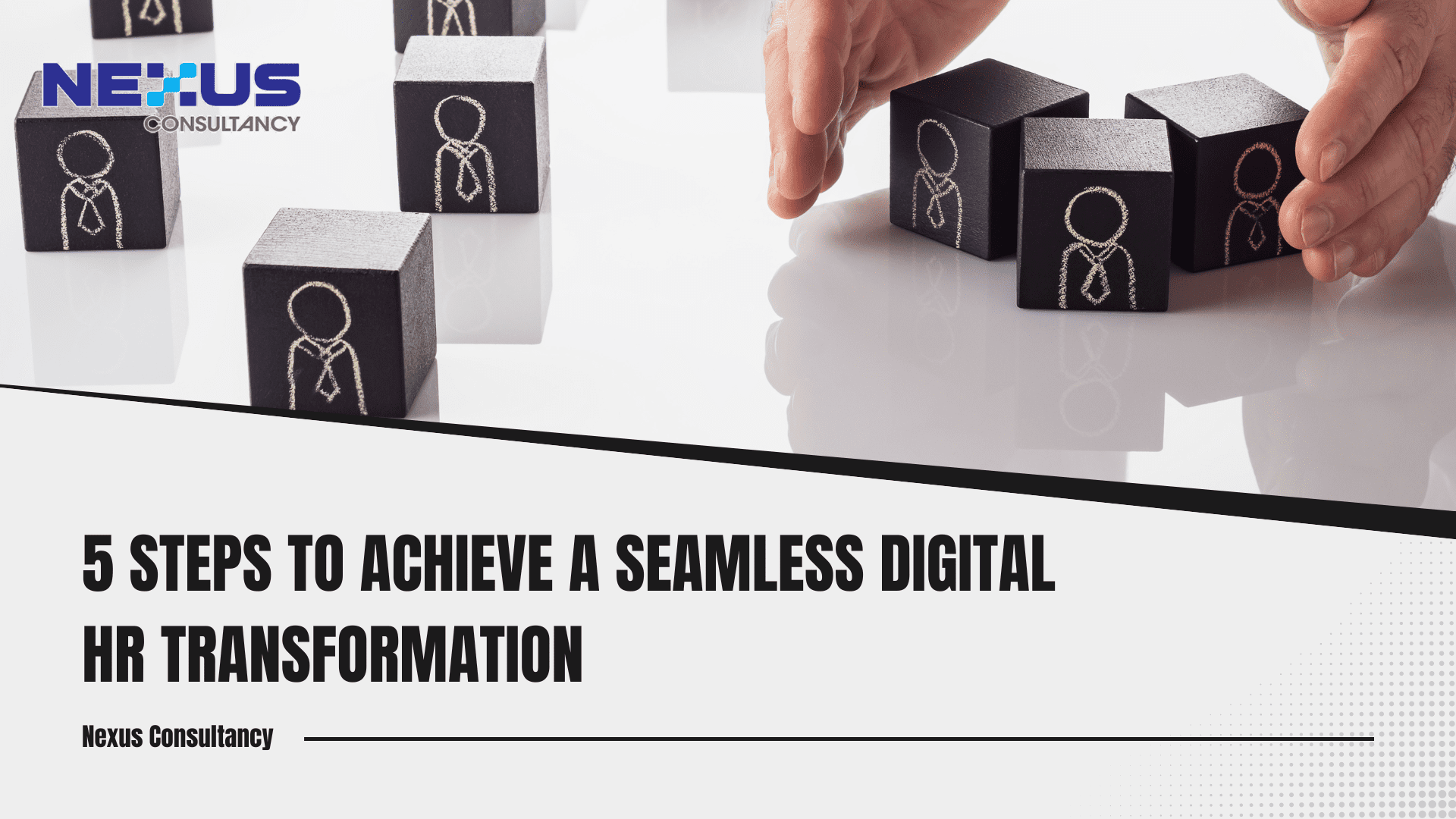
The rapid shift to remote working has forced many Human Resources departments to undergo digital transformation. The digital transformation of HR processes has been long overdue, but HR teams are finally saying goodbye to manual processes and paperwork. HR is now expected in many organizations to deliver services that contribute to the organization’s overall digital transformation and create long-term business value.
So what factors will help you succeed in your HR transformation journey?
1. Having An Aligned Vision
To begin, identify where you are in your transformation journey and clearly define a strategic vision for where you want to go. An HR technology project is expected to support both the HR strategy and the business strategy of the organization. You must have a clear vision of how technology will facilitate and develop HR services, as well as the impacts you expect to see.

2. Putting People First
Understanding the employee experience is crucial. Business managers and HR employees are critical stakeholders in an HR technology implementation project because their day-to-day work is heavily influenced by how processes and technology interact.
Have workshops with the potential users early on and throughout the development, address their concerns and solicit their feedback. It is also critical to include both managers and employees in your needs analysis so that you can understand their perspectives and needs on processes and user experience. Ensure that employees and managers are involved in the evaluation of potential HR solutions, as well as in the design and testing of the system during its implementation.

3. Evaluate the Best HR Technology
The HR software validation procedure is critical. You must evaluate all options and define what you want, what criteria you want in a vendor, and how you will select the best option.
Rather than haphazardly approaching potential suppliers, have them give tailored demos to your organization’s needs. Furthermore, confirm the dependability of records and security protocols of cloud-based platforms.
Determine whether the solution can grow with your company and how much control you’ll have over changes and additions over time.

4. Putting Emphasis on Change Management
The core of digital transformation is not technology – it’s about organizational change. Change management is essential for the success of any HR technology implementation project. Make sure someone is in charge of stakeholder management, communication, culture change, and training. It is critical that the vision and expected impact of the project are shared with all stakeholders within the organisation, and that end users are adequately prepared to accept new ways of working and tools.

5. Planning For the Future
Define the management and development strategy for your future HR solution. Ascertain that you have designated process owners, product owners, and system managers to be in charge of management and continuous development. It is beneficial to hold regular workshops with your team in order to continuously develop and improve the tool in accordance with your plan.
Conclusion
A digital HR transformation for your company can be a good and necessary move. The paradox here is that digitalization curbs the same challenges it poses. However, the pros outweigh the cons.
Digital HR software will automate and streamline HR procedures. It will reduce effort, time, and cost, making your company function better.
The world is moving fast-paced, and it is only logical to keep up with it. With every sector being revolutionized, why not the human resource department?
Invest in good software, and see significant changes unfold.
Reference/Source:
- https://www.thehumancapitalhub.com/articles/hr-digital-transformation-a-step-by-step-guide-to-hr-digital-transformation
- https://www.aihr.com/blog/guide-hr-digital-transformation-hr-transformation/
- https://www.getapp.com/resources/digital-transformation-people-process-operations/




